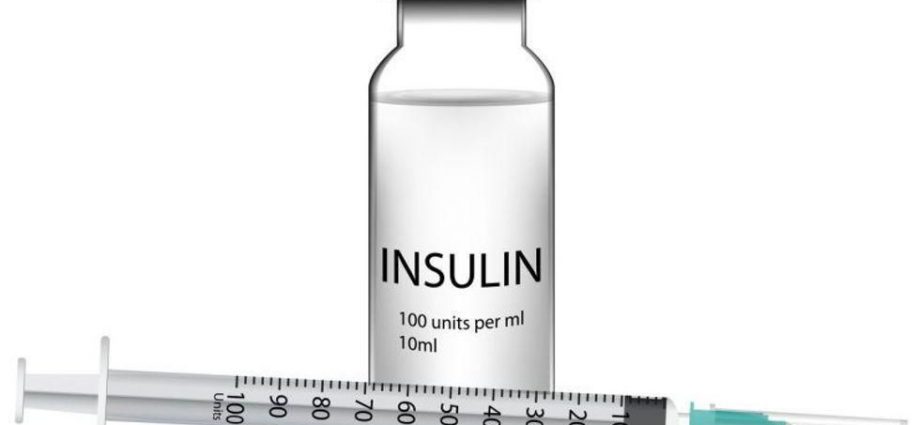TUESDAY, Oct. 18, 2022 (HealthDay News) — More than 1 million Americans with diabetes have to ration lifesaving insulin because they can’t afford it, a new study shows.
Many people delayed picking up their insulin prescription, while others took lower doses than they needed, researchers found.
Experts said the findings are hardly surprising: Insulin prices have skyrocketed over the past 20 years, and surveys have suggested that many Americans ration the drug to save money.
“Our findings reinforce, in a nationally representative sample, what patients have been saying for years,” said researcher Dr. Adam Gaffney, a critical care specialist at Harvard Medical School and Cambridge Health Alliance.
Insulin is a hormone that shuttles sugars from food into body cells to be used for fuel. When people have diabetes, their bodies either do not produce insulin or cannot properly use it, which causes blood sugar levels to soar.
Type 1 diabetes arises when the immune system mistakenly destroys the pancreatic cells that make insulin. People with type 1 must take insulin every day to survive.
If they underuse their insulin, that can lead to a potentially fatal complication called ketoacidosis — where blood sugar levels spike so much that the blood becomes highly acidic.
Gaffney, who works in an intensive care unit, said he has treated patients with ketoacidosis who could not afford their insulin.
Meanwhile, people with type 2 diabetes — the much more common form of the disease — often take insulin as part of their medication regimen to lower their blood sugar. Gaffney said that controlling blood sugar is critical for patients with either form of diabetes, to help prevent long-term complications such as heart, kidney and eye disease.
“It’s really hard to control a disease when you can’t afford the medications you need,” Gaffney said.
“The high cost of this lifesaving drug is causing hardship and suffering for far too many Americans — 1.3 million Americans rationing insulin last year is outrageous,” said Lisa Murdock, chief advocacy officer for the American Diabetes Association (ADA).
According to the ADA, the average price of insulin — a 100-year-old drug — tripled between 2002 and 2013, followed by a tripling in the price of the four most popular forms of insulin over the past decade.
Several factors have been cited, including a lack of competition and generic options. The few companies that control the insulin market have made changes to their products’ formulations over the years that allow them to keep extending their patents.
The end result has been rising costs passed onto patients.
Some relief is arriving: Starting next year, a new federal law will limit the amount of money that Medicare patients pay for insulin — capping their monthly copay at $35.
Even that amount, Gaffney noted, can be high for seniors, who may have fixed incomes and multiple prescriptions. Plus, the Medicare cap leaves out the many Americans with diabetes who are not covered by the program.
The point of medication copayments, or any “cost-sharing” that insurance plans require, is to encourage patients to only seek medical care that they truly need.
But when the medication is a matter of life and death, cost-sharing is “stupid,” said Len Nichols, of the Urban Institute’s Health Policy Center in Washington, D.C.
Ultimately, he said, the problem of high insulin prices needs to be addressed.
“But in the short term, we need to get copayments down to zero,” Nichols said.
The new findings, published Oct. 18 in the Annals of Internal Medicine, are based on data from an ongoing federal health survey. In 2021, it included 982 U.S. adults with diabetes who used insulin.
Overall, 16.5% said they’d rationed insulin in the past year — translating to 1.3 million Americans with diabetes. Rationing was most common among the uninsured, with almost 30% saying they’d either delayed buying insulin or reduced their doses. Next were people with private insurance, 19% of whom said they’d rationed insulin.
Unfortunately, many people with private insurance are still “underinsured,” said Sara Collins, vice president of health care coverage and access at the nonprofit Commonwealth Fund.
That is, some health plans have such high cost-sharing — in the form of copayments, high deductibles and similar charges — that patients end up paying a lot toward their medical care.
“We have a huge problem of underinsurance in this country,” Collins said, “and it’s showing up in these data again.”
In the absence of a federal law, some states are taking action to cap insulin payments for people who are not on Medicare. At least 20 states and Washington, D.C. have done so, according to the ADA.
But all of the experts noted that leaving it up to states inevitably leaves some Americans behind.
More information
The American Diabetes Association lists resources for help in paying for insulin.
SOURCES: Adam Gaffney, MD, assistant professor, medicine, pulmonary and critical care physician, Harvard Medical School, Cambridge Health Alliance, Cambridge, Mass.; Sara Collins, PhD, vice president, health care coverage and access, Commonwealth Fund, New York City; Lisa Murdock, chief advocacy officer, American Diabetes Association, Arlington County, Va.; Len Nichols, PhD, nonresident fellow, Health Policy Center, Urban Institute, Washington, D.C.; Annals of Internal Medicine, Oct. 18, 2022, online
Copyright © 2025 HealthDay. All rights reserved.

